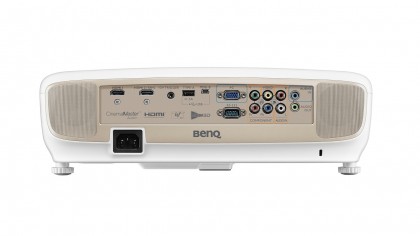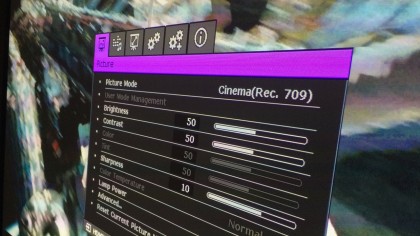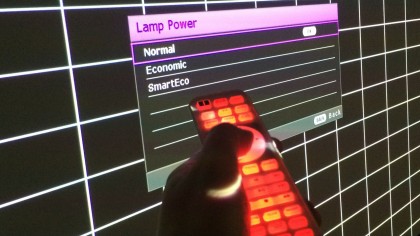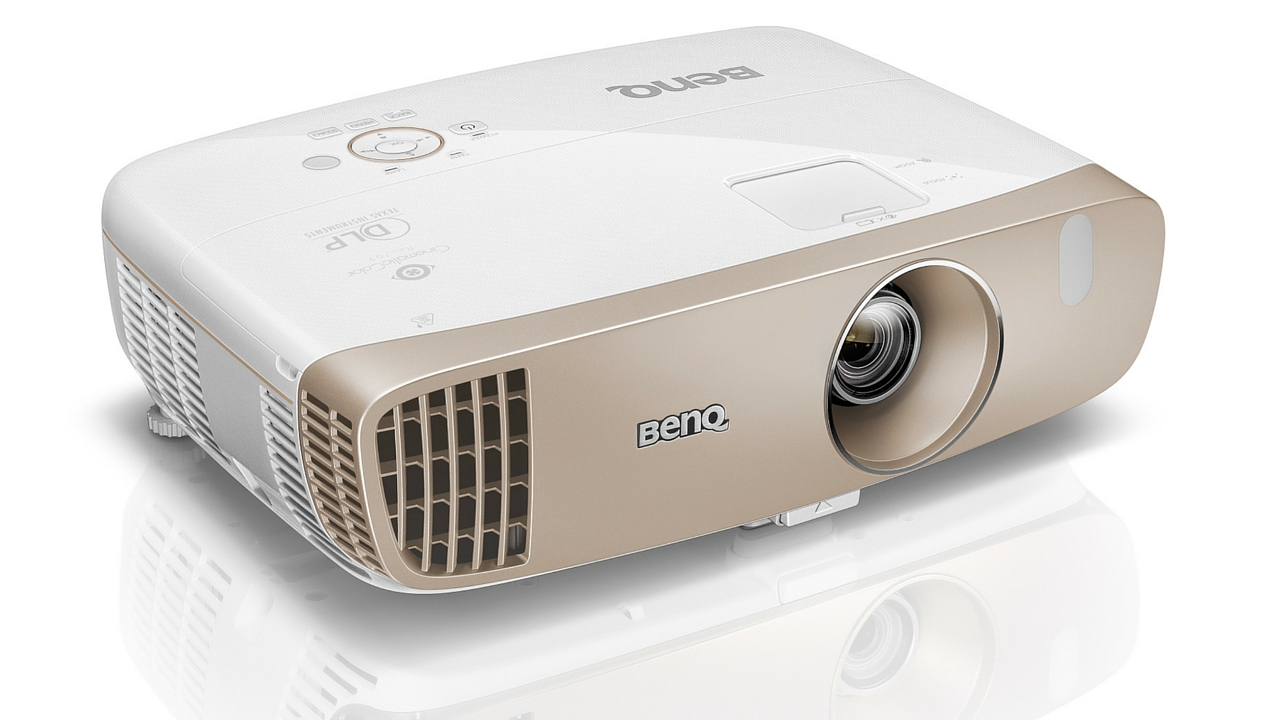TechRadar Verdict
A modicum of DLP rainbow effect, some so-so black levels and a hint of film judder can't prevent the W2000 from offering one of the loveliest, most involving Blu-ray performances so far from an affordable quickdraw DLP projector.
Pros
- +
Blu-ray-tuned Cinema preset
- +
Powerful speaker
- +
Easy set-up
- +
Sleek & compact design
Cons
- -
Rec. 709 is for HD only
- -
Mild rainbow effect
- -
Some judder
- -
No digital file playback
Why you can trust TechRadar
What would persuade you to buy a projector and create your own home cinema?
Whereas a big TV is easy to set-up and use – you just take it out of a box and press some buttons – a projector is much more specialised, requiring loads of space, a screen and a lot of cables.
At least, that's the fear.
Which is why we're now seeing a bevy of so-called lifestyle beamers, like this new BenQ W2000, designed to be plonked on a coffee table and aimed at a wall. What could be easier?
However, as well as simple set-up and a short-throw lens, BenQ thinks you want something else, too – HD colour reproduction of the very highest quality. For as well as boasting a new thermal system reduce acoustic noise, the BenQ's new W2000 uses the Rec. 709 standard, an international standard for HDTV colour reproduction.
For those of us who love Blu-ray's exactness of detail, the W2000 could be just the ticket.
Design and specs
This DLP projector is reasonably short-throw, able to create a 100-inch image from about 2.5 metres away. I found the 1.3x zoom wheel around the lens, and the vertical lens shift dial just above it (both hidden under a sliding door) – of massive help in aligning the image – but I did also have to use the screw-down feet, too (there's one quick release foot on the front, two screw-style feet on the rear).

Keystone allows some degree of side-on placement, but not enough and, besides, using it degrades the image's geometry.
Set-up on the rear isn't at all tricky, with a couple of HDMIs probably all most users need to know about (also back there is component video, a PC hook-up, an RS-232 port, 12V trigger and a 3.5mm audio jack for taking audio out). All that's missing is a headphones jack. Given the presence of a built-in speaker that would have been nice a nice addition. There's also the fact the USB slot won't playback digital files from a thumb-drive.
However, the W2000's remote is perfection; small and easy to operate, it lights-up in orange for use in a blackout.

Performance
The Rec. 709 standard that makes up the W2000's Cinema preset (the others include Games, Bright, Vivid and two user-defined settings) is truly excellent. With my test disc Gravity playing, the cinematic colours are the W2000's clear highlight, and it's mostly down to the precision-calibration of a six-speed RGB colour wheel. That allows more space between the primary colours while not letting in too much brightness.
However the W2000 does grapple with the classic trade-off between brightness and black levels.
It's a tricky double-act to pull-off on a projector since black is merely the absence of light, but still the very darkest areas of images do lack both a profound darkness and subtle detail within.

Although I would recommend choosing the Normal lamp setting (others include the fainter Economic and the auto-adjust SmartEco), it's a slight issue for the W2000, whose maximum 2000 ANSI Lumens lamp means it can be used in daylight as well as in a blackout.
However, do switch the lights out and draw the curtains if you want to benefit from that sumptuous Rec. 709 colours.
What the W2000 can't help with, however, is film judder; only the step-up W3000 includes the kind of frame interpolation tech that smoothes-out fast pans and motion.
It's also worth mentioning the W2000's built-in speakers, which impress on both volume (at 20W they're just as powerful as your TV) and distortion-free range. Thankfully, such built-in speakers have become a default on all quickdraw projectors in 2015, though on the W2000 it's a little loud even when put on the very lowest setting.
Jamie is a freelance tech, travel and space journalist based in the UK. He’s been writing regularly for Techradar since it was launched in 2008 and also writes regularly for Forbes, The Telegraph, the South China Morning Post, Sky & Telescope and the Sky At Night magazine as well as other Future titles T3, Digital Camera World, All About Space and Space.com. He also edits two of his own websites, TravGear.com and WhenIsTheNextEclipse.com that reflect his obsession with travel gear and solar eclipse travel. He is the author of A Stargazing Program For Beginners (Springer, 2015),

